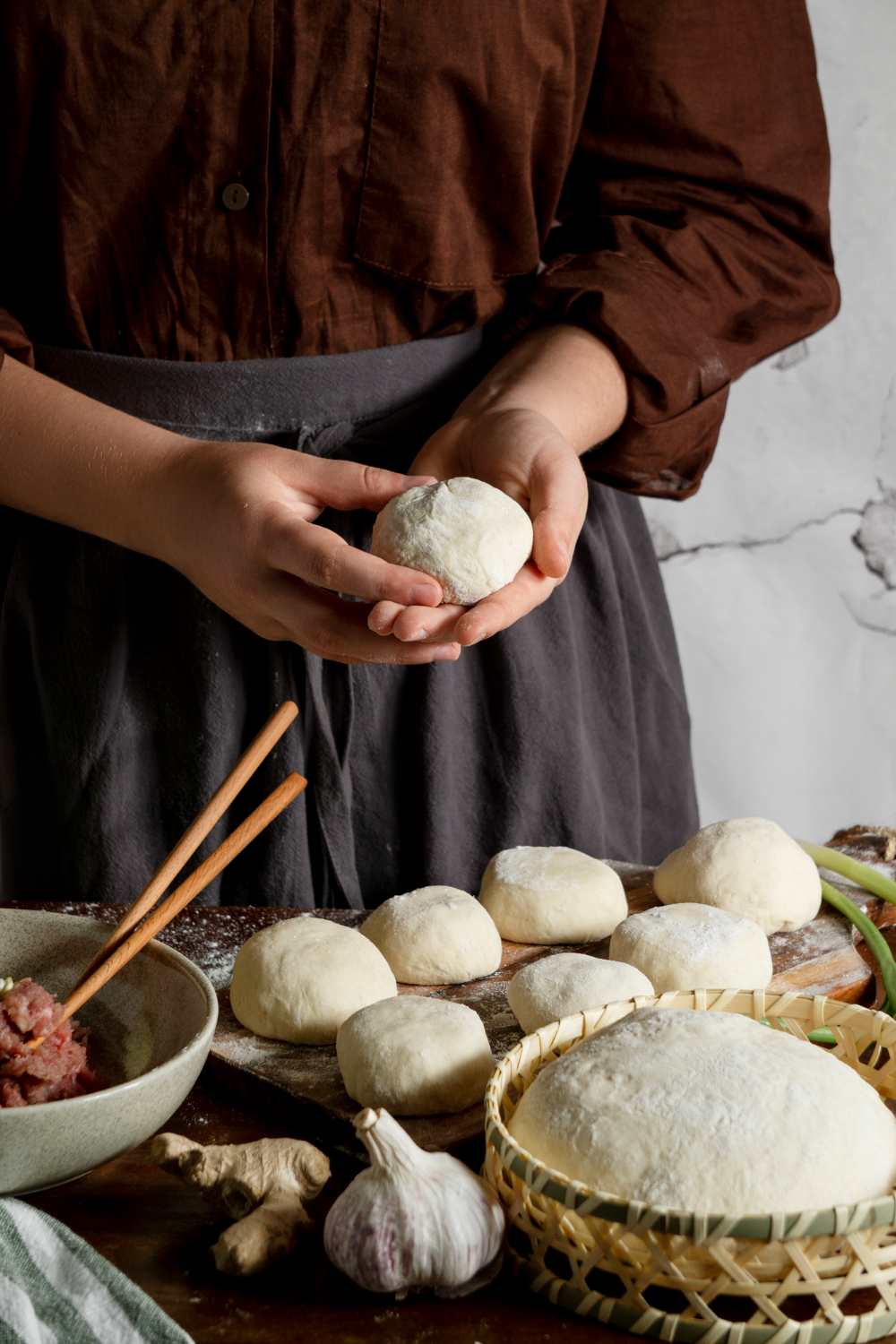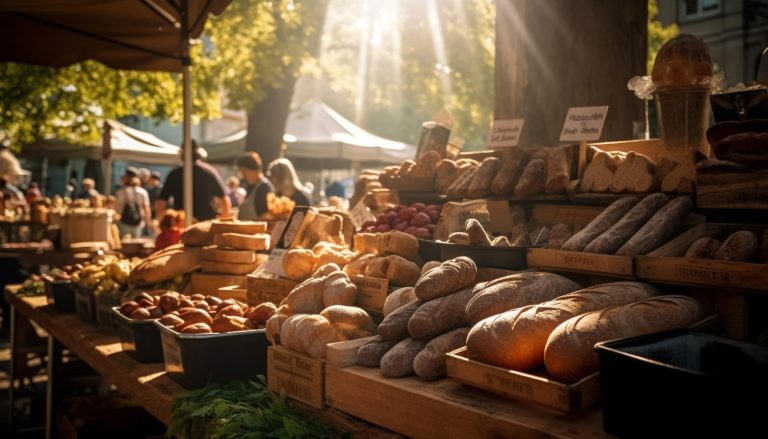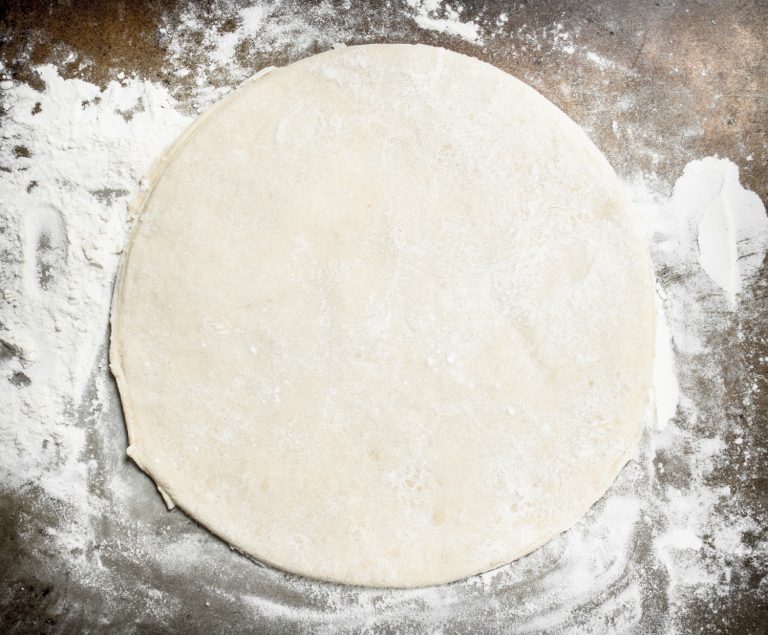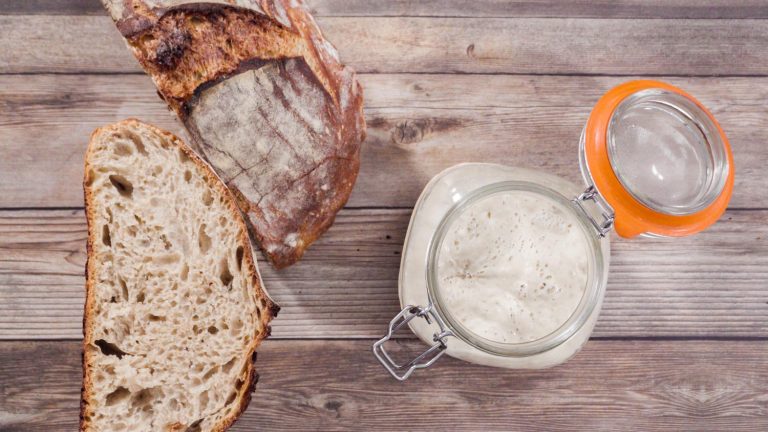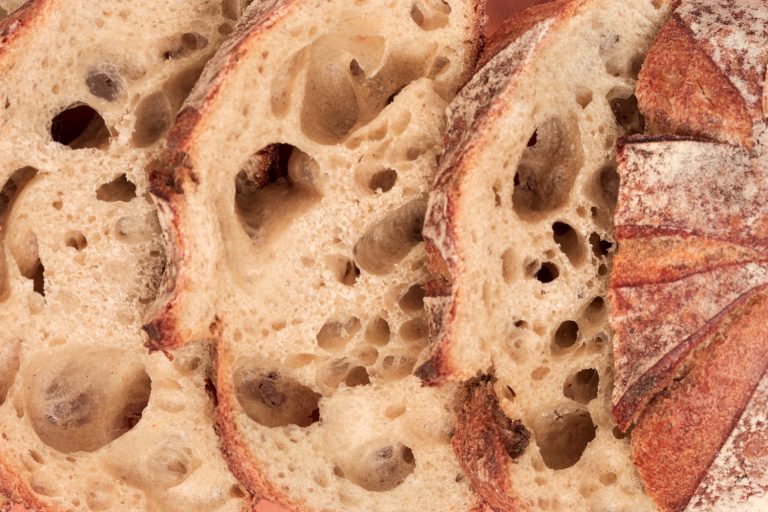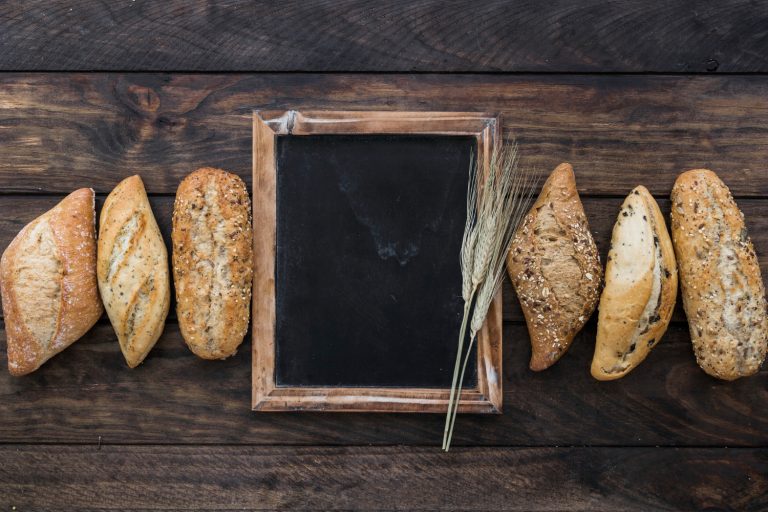How to Craft Asian Flavored Sourdough Bread: A Step-by-Step Guide
Did you know that sourdough baking surged by 400% during 2020, yet most bakers stick to traditional European recipes?
Classic sourdough has its charm, but we found something exciting: combining centuries-old Asian breadmaking breadmaking sourdough creates uniquely delicious results. The pillowy, soft texture of Japanese shokunin and the aromatic influence of Chinese scallion pancakes make Asian-flavored sourdough bread a gateway to new possibilities.
Our experiments with tangzhong methods and Asian ingredients have made regular sourdough extraordinary. These techniques add new flavors and improve the bread’s texture and shelf life.
Want to expand your sourdough skills beyond the traditional? We’ll show you how to craft Asian-inspired sourdough bread, from starter maintenance to traditional shaping techniques. Let’s start this exciting baking experience together!
Understanding Asian Bread Traditions
A look at Asian bread traditions reveals an array of baking heritage that dates back thousands of years. The steamy streets of Hong Kong and bustling markets of Mumbai showcase unique regional approaches to brbreadmakingOvbreadmakingraditional Asian Breads
Asian bread traditions feature remarkable regional differences. The beloved mantou, a steamed bun from Northern China, has remained a dietary staple for more than 1,500 years. Asian breads come in many forms:
- Northern Asian: Mantou (China), Shokupan (Japan)
- Southern Asian: Roti, Naan, Paratha (India)
- Southeast Asian: Pandesal (Philippines), Roti Canai (Malaysia)
Key Flavor Profiles in Asian Baking
Asian breads stand out with their distinctive flavor profiles and textures. These breads feel softer, moister, and fluffier than Western varieties – many describe them as “pillowy clouds.” The flavor profiles include:
| Region | Characteristic Flavors | Notable Ingredients |
|---|---|---|
| East Asia | Subtle, milky, slight sweetness | Rice flour, milk powder |
| South Asia | Aromatic, savory | Whole wheat, herbs, spices |
| Southeast Asia | Sweet-savory balance | Coconut milk, pandan |
Cultural Significance of Bread in Asia
Bread carries deep cultural meaning throughout Asia. Harbin’s Da Le Ba, a Russian-influenced sourdough, has bridged cultural gaps for over a century. The rise of bread in Asia showcases centuries of trade, cultural exchange, and culinary breakthroughs.
I love how each region adapts brbreadmakingo brbreadmakingnd ingredients. Japanese bakers created unique options like cream-filled and curry-stuffed loaves after Portuguese traders introduced bread in the mid-16th century. India’s bread tradition emerged through Portuguese influence (pao) and Middle Eastern routes, which led to countless flatbread varieties.
Modern Asian bakeries blend ancient techniques with current priorities. Traditional methods like tangzhong combine with modern sourdough practices to create exciting possibilities for home bakers.
Mastering Your Sourdough Starter
A healthy sourdough starter in Asia’s tropical climate comes with its own set of challenges. We found that these conditions can actually work in our favor. Years of testing helped us develop strategies to create vibrant starters perfect for Asian-style bread.
Maintaining Starter Health in Humid Climates
Our hot and humid Asian kitchens create incredibly active sourdough starters that thrive between 28-30°C temperatures! This increased activity needs careful management. We recommend:
- Using a kitchen thermometer to monitor temperature and humidity
- Feeding every 12 hours instead of 24 hours in high temperatures
- Keeping detailed notes of starter behavior in different weather conditions
- Use cold water for feeding, especially when you have hot days
Adjusting Hydration for Asian Flour Types
Asian flours need specific hydration adjustments. Here’s our tested hydration guide:
| Flour Type | Recommended Hydration | Starter Consistency |
|---|---|---|
| All-Purpose | 100% | Batter-like |
| Bread Flour | 80% | Dough-like |
| Rice Flour Mix | 90% | Slightly thick |
Asian flours work best with lower hydration (around 80%) with adjustments based on flour absorption rates. This creates a more substantial starter that’s perfect for tangzhong sourdough applications.
Incorporating Asian Grains and Flour
Our experiments with various Asian grains in our starter have been successful. Gradual introduction is vital—start by replacing 25% of regular flour with the new grain, then increase over several feedings. This method prepares starters for specialties like sourdough shokunin scallion pancakes.
Room temperature maintenance helps monitor starter behavior closely while incorporating new flours. A mixture of bread flour and 20% rice flour creates an exceptionally active starter perfect for Asian-style bread.
Note that humid climates might need less water than traditional recipes suggest. We reduce hydration by 10-15% to maintain the right consistency. This adjustment is vital to achieving the perfect texture in our Asian sourdough creations.
Essential Asian Ingredients
By picking the right ingredients, you can create authentic Asian-flavored sourdough. Our tests show that mixing traditional Asian flavoring agents with sourdough creates amazing results that go beyond regular bread making.
Traditional Flavoring Agents
The foundation of Asian-flavored sourdough starts with basic condiments. Sesame oil brings a rich, nutty depth that makes ordinary bread extraordinary. A few teaspoons can really improve the aroma, especially in walnut-based recipes. Miso paste is another game-changer that adds incredible umami depth to sourdough. Brown miso (genmai miso) works best because of its rich flavor profile.
Working with Asian Milk Products
The right milk products give you that soft, pillowy texture. Asian milk bread, especially Hokkaido-style, needs special attention:
| Milk Type | Effect on Bread | Best Used For |
|---|---|---|
| Hokkaido Milk | Rich, creamy texture | Shokupan base |
| Regular Whole Milk | Good everyday option | Standard recipes |
| Coconut Milk | Tropical flavor notes | Southeast Asian variations |
Fat content really affects the final texture. High-fat options like coconut milk work great as dairy-free alternatives to keep that signature softness.
Incorporating Asian Herbs and Spices
Our exploration of Asian spices opened up exciting possibilities. Here are the combinations that work best:
- Aromatic Spices:
- Cardamom and cinnamon for masala-inspired loaves
- Star anise and black pepper for complex depth
- Turmeric for color and warm, peppery notes
Adding spices needs the right timing and method. We get better results by infusing spices in milk or butter first instead of adding them directly to the dough. This makes their flavors stronger and doesn’t mess with the yeast activity.
Simmering whole spices in oil at the start, like in Indian cooking, gives the best results. The oil-soluble flavor compounds develop fully, creating more nuanced tastes in the final loaves.
Keep in mind that strong flavoring agents like sesame oil or miso need a light touch at first. You can always adjust based on taste. This helps create balanced flavors that work well with the natural sourdough tang.
Core Techniques for Asian Flavors
Asian bread techniques have entirely changed our sourdough baking. We found that the magic isn’t just about ingredients. The specialized techniques give Asian bread its unique character.
Tangzhong and Water Roux Methods
The ltangzhong method is the lifeblood of our Asian-style sourdough. We refined this technique through many test batches. Pre-cooking flour with liquid creates a gelatinized paste that changes our bread’s texture.
Here’s our proven tangzhong ratio that works every time:
| Component | Ratio | Temperature |
|---|---|---|
| Flour | 1 part | 65°C (150°F) |
| Liquid | 5 parts | Pre-heated |
The mixture needs to reach exactly 65°C (150°F). Higher temperatures will reduce its effectiveness. This technique lets us achieve higher hydration without sticky dough, and the bread stays fresh substantially longer.
Lamination with Asian Ingredients
Our work with lamination has created new ways to add traditional Asian fillings. We developed a method that will give a smooth distribution and beautiful swirling patterns:
- Stretch the dough gently into a thin rectangle
- Apply filling (like red bean paste or black sesame) evenly
- Roll carefully, maintaining consistent thickness
- Perform coil folds to develop gluten structure
Cool dough prevents fillings from bleeding into the dough structure. This becomes vital when using wet ingredients like black sesame paste.
Shaping Traditional Asian Patterns
Traditional shaping techniques affect both appearance and texture. Our Asian-style sourdough uses the Japanese method of vertical seams. This creates those distinctive tear-apart sections.
Timing makes all the difference in shaping. The dough works best when slightly cool (around 24°C). The classic milk bread pattern needs six equal portions. We shape them individually and place them in alternating directions in the pan.
Our method stands out by blending traditional Asian techniques with sourdough fermentation. Sweet fillings speed up fermentation, so we cut standard proofing times by 15%.
The tangzhong method works beautifully with natural sourdough fermentation. Pre-gelatinized starches lock in moisture, while sourdough adds depth to the flavor. This creates what we see as the perfect blend of East and West.
Troubleshooting Common Issues
We’ve spent years experimenting with Asian-flavored sourdough and faced many challenges along the way. Let me share what we learned about common problems and how to fix them.
Addressing Texture Problems
The perfect texture in Asian-style sourdough needs the proper hydration levels. Our tangzhong sourdough sometimes comes out gummy or dense, so we check the flour-to-water ratio first. Here’s our troubleshooting guide:
| Texture Issue | Likely Cause | Our Solution |
|---|---|---|
| Gummy Interior | Over-hydration | Reduce water by 5% |
| Dense Crumb | Under-fermentation | Extend bulk ferment by 30 minutes |
| Tough Crust | Low humidity | Add steam pan during baking |
Making sourdough shokupan taught us that the protein content of Asian flour varieties significantly affects—the the texture. Textextureapatextureadflour needs 2-3% less hydration to achieve the soft, pillowy texture we want.
Managing Fermentation in Different Climates
Humid Asian climates speed up fermentation. Here’s what works best for us:
- Reducing the starter percentage to 15% (from the traditional 20%)
- Maintaining dough temperature between 24-26°C
- Shortening bulk fermentation by 25% in temperatures above 28°C
Baking in different climates taught us to be flexible with timing. Watching dough temperature works better than following strict time schedules, especially with traditional Asian bread varieties.
Fixing Flavor Balance Issues
Getting the right balance between sourdough tang and delicate Asian flavors needs a careful touch. If the bread tastes too sour, we:
- Feed our starter more frequently (every 8 hours instead of 12)
- Use the starter at peak activity rather than after it starts falling
- Reduce the fermentation temperature to slow acid production
Black sesame or red bean paste needs 10% less starter. This keeps these subtle flavors from getting lost while the dough still ferments properly.
Our sourdough scallion pancakes need more salt (2.2% instead of 2%) and 15% less fermentation time. This keeps the traditional flavor while adding that nice sourdough complexity.
Temperature plays a vital role in flavor development. For Asian flavor profiles, we keep bulk fermentation at 25°C. This sweet spot balances acid development with subtle ingredients like pandan or milk powder.
Testing showed us how different Asian ingredients change fermentation. Honey or malt syrup speeds things up, while matcha or black sesame paste slows it down a bit. Sweet ingredients need 10-15% less proofing time to get the best results.
Conclusion
Asian-flavored sourdough bread excitingly fuses traditional and modern baking techniques. Our tests with tangzhong, Asian ingredients, and specialized shaping techniques reveal these unique textures and flavors beyond classic European-style sourdough.
Asian sourdough’s success depends on key details. Bakers must maintain their starter properly in humid climates, select ingredients carefully, and become skilled at techniques like lamination and traditional shaping patterns. Minor adjustments in hydration, temperature control, and timing create the most important differences in your results.
Want to begin your own Asian sourdough experience? You can raise your bread and pizza-making skills with an authentic artisanal sourdough starter from The Yeast We Can Do. Email john@theyeastwecando.com to get our premium starter, which helps create exceptional bread with perfect tangy flavor and signature crust.
Each loaf teaches something new. These techniques and an understanding of common challenges will help you create beautiful Asian-inspired sourdough breads that perfectly blend both baking traditions. Happy baking!
FAQs
What contributes to the distinct taste of sourdough bread?
The unique flavor of sourdough bread primarily comes from lactic acid and acetic acid produced by the sourdough culture. Acetic acid, which is similar to vinegar, imparts a tangy taste to the bread. The bread can achieve a more pronounced tangy flavor by creating favorable conditions for acetic acid-producing organisms.
How can I enhance the flavor of my sourdough bread?
To intensify the flavor of your sourdough bread, consider adding a small amount of citric acid to your dough. This will give your bread a stronger sourdough taste.
Is there a way to replicate the sourdough flavor without traditional methods?
To mimic the sour taste typical of sourdough, you can add acid to the dough. For a single loaf, incorporating about one and a half to two teaspoons of white vinegar into the dough mixture can achieve this effect.
What ingredients can I add to homemade bread to improve its flavor?
The flavor of homemade bread can be enhanced by adding ingredients like nuts, seeds, dried fruits (whole or chopped), olives, or fresh herbs such as thyme or rosemary. Add these ingredients during the ‘knocking back’ stage of dough preparation for even distribution.
Are there any Asian-inspired recipes that utilize sourdough discard?
Yes, there are several Asian-inspired recipes that use sourdough discard. Shokunin (Japanese milk bread) is a popular choice. You might also explore making pineapple bread or matcha thumbprint cookies, which are delightful ways to incorporate sourdough discard into Asian-style bakery items.
